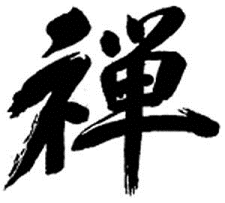Soh Wei Yu
9m ·
Shared with Your friends
Friends
Active
Yin Ling
dntseoropSa7i418gh5l
h
94
3
chif6la1iataa1ut0587ih29t9af00ll439c
·
Self-compassion
Self-love
… Are the world most confused ideas
And will not bring happiness.
Every time I see “love your self” on a dhamma website or group I cringe so much 😬😜
11
3 Comments
Like
Comment
Share
3 Comments
Active
Soh Wei Yu
If "love your self" as the mere absence of "hate your self", then it's ok. (Like Nirvana is this highest bliss, which is the mere absence of suffering but not a transient state of happiness or feelings) But not loving a real "self" because it cannot be found. Loving a "separate self" is falling in love with an illusion.
"Love your (conventional) self" as loving everything sensed, felt, cognized, thought, etc, also ok. Not a separate/inherently existent self.
Like
Reply8mEdited
Active
Soh Wei Yu
"Many love Presence, the background, the reality behind all appearances. If we can dedicate the same love towards appearances and to thoughts, I think that will do; for they are one and the same. Forget about self or no-self if it is confusing. My 2 cents." - John Tan, 2007
Like
Reply2m
Active
Soh Wei Yu
Actualizing no-self is like falling in love with everything moment to moment that you call "yourself" and "others" without reifying and dualizing "yourself" or "others"...
Like
Reply2mEdited
We might also consider the example of the reflection of the moon in a pool of water. We perceive a clear distinct appearance of the moon in the water, but this is solely because of the gathering together of the appropriate conditions: the satellite of the Earth, a cloudless sky, a pool of water on the ground, and the passing by of a perceiving subject. Out of the interaction of these conditions, the clear distinct appearance of the moon manifests in the water, but it is merely a reflection devoid of any intrinsic nature. The reflection is a dependently originated phenomenon, which has no intrinsic nature of any kind whatsoever. Yet at the same time, it is not merely nothingness: there is a distinct appearance. This is the characteristic of dependently originated phenomena: clearly appearing without any intrinsic nature. One cannot abstract the reflection of the moon from the water, because it does not have a separate existence. In fact, the manifestation of all phenomena is just like that reflection of the moon in the water: they appear, but only through the interaction of causes and conditions. So there is no need to cling to the idea of a truly existent mind as their creator. Mind is, itself, empty of such an intrinsic nature. There are many other examples we could employ to realise how all phenomena simply arise as illusions: mirages, clouds, lightning, the imaginary palaces that one beholds in the sky in a cloud formation, rainbows, or optical illusions over bodies of water. These things all appear clearly, but without any intrinsic nature, because they merely manifest through dependent origination.
- Lama Jampa Thaye and 1 more
Patterns in Emptiness: Understanding Dependent Origination in Buddhism: 1
William LimThe point I suppose is that every "thing" is a result of other things, in space and in time, and hence the "thing" in particular doesn't have an inherent "nature", or independent "thingness".
Devil's Advocate :
If
everything is essentially made up of atoms, electrons and proton etc, "what" arranges some atoms into a stone, and some into a "person"?
Is that "what" that ties the atoms to form a stone not the "essence" of the stone?
Soh Wei YuOnly by imputation and ignorance is a person seen as a person. There is no truly existing self. Same goes for stones or anything else.
Was reading a post by kyle today:
Appearances would still manifest, but they would not be experienced as substantial entities, objects, persons, places or things.
It would be akin to realizing phenomena are like a dream. Apparent, but not real objects. Like a tiger in a dream is apparent, but there is not actually a tiger there. In realizing emptiness, the appearance or basis for the designation of an object like a car would appear, but you would know there is no car there. Only an illusion.
You would experience the entire universe as being devoid of substance, like a mirage.
Stian Gudmundsen HøilandYes, the point is that apart from *things being in relative arrangements*, there is no appearance. Hence the color yellow is "made up by" red and green, and there is no yellow in itself. Thus, apart from *being something appearing because of a relative
arrangement*, there is nothing. There is not yellow; there is red and green in a relative arrangement.
Hence, this fact itself means two things: that the very way things appear (so, first, they appear) is by relative arrangement (thus, second, *in that* there is no intrinsic existence).
Stian Gudmundsen Høiland> The reflection is a dependently originated phenomenon, which has no intrinsic nature of any kind whatsoever. Yet at the same time, it is not merely nothingness: there is a distinct appearance. This is the characteristic of dependently originated
phenomena: clearly appearing without any intrinsic nature.
Very clear. Yes, the nature of relative phenomena is what is called emptiness.











